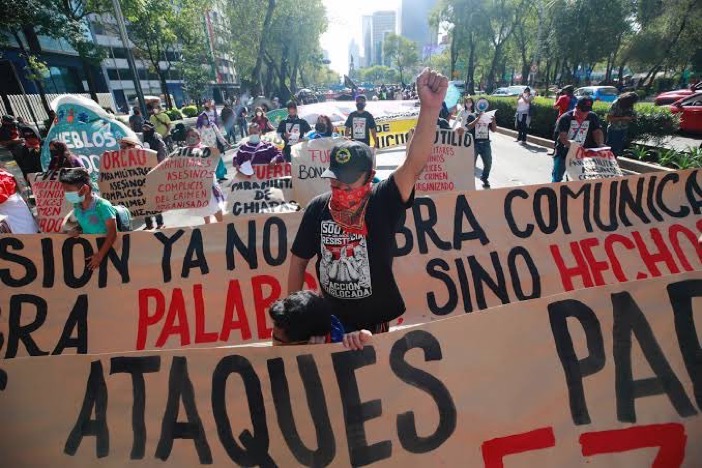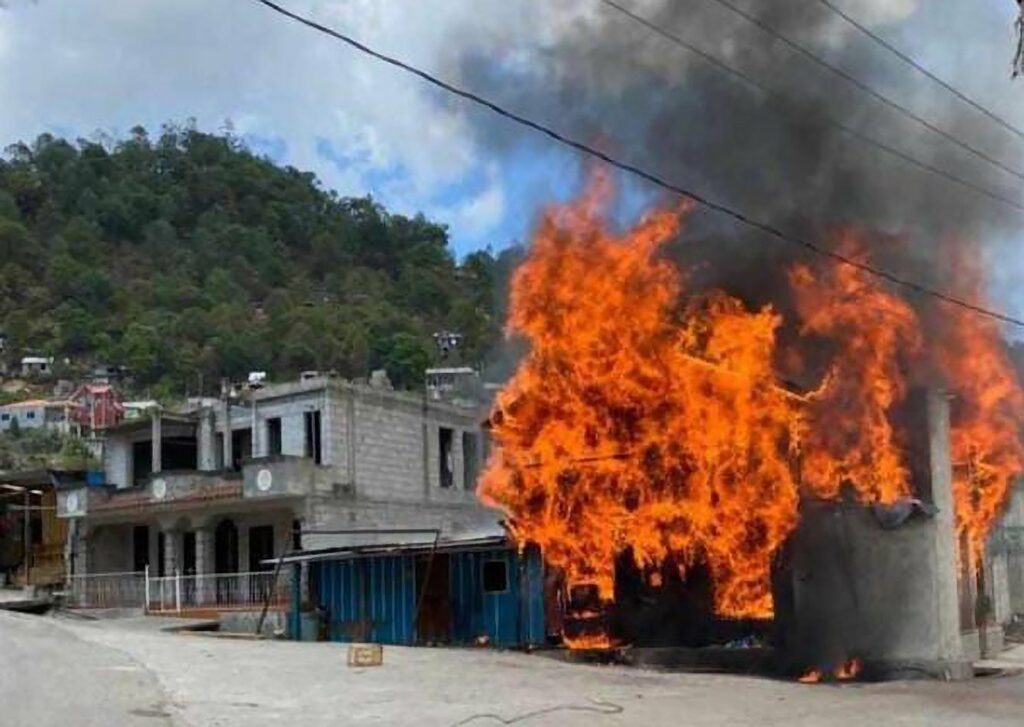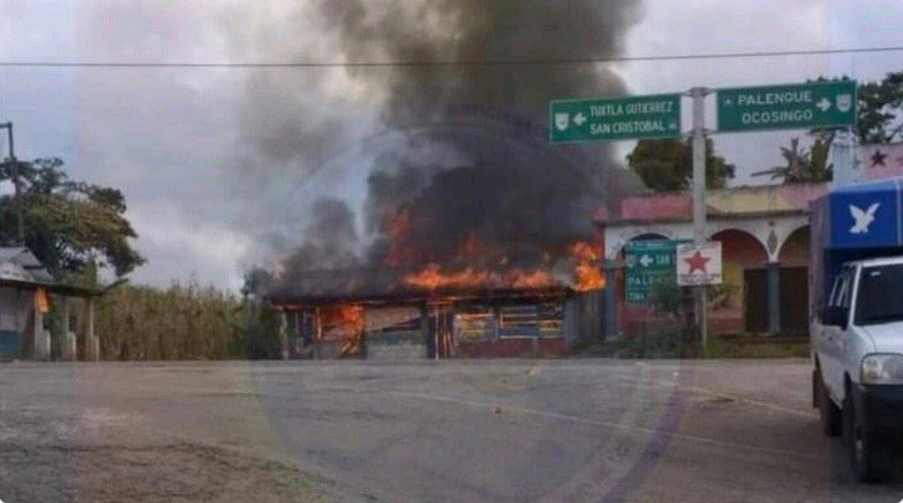Luis Hernández Navarro

Chiapas is a powder keg ready to explode. Violence is multiplying at an alarming rate. Armed attacks by paramilitaries against Zapatista communities are frequent and intensifying. Organized crime groups organize the recruitment of young people to swell their armies. Thousands of displaced people live in the bush or in makeshift villages. In San Cristóbal, gangs of motorized delinquents engage in pitched battles to control markets and drug routes. Cartels fight in blood and fire for control of the border with Guatemala.
It is a diverse violence, fueled by a combination of ancestral conflicts and new disputes linked to land, commerce and narco-business. Despite the presence of the Army and the National Guard, high caliber weapons are available with astonishing ease. In the face of government inaction, paramilitaries, hired killers, self-defense groups (Pantelhó, Altamirano and San Cristóbal) and private security agencies are multiplying throughout the state.
The paramilitary groups, protected by the authorities, have become associated with organized crime, which subcontracts their services. They work a double shift. On the one hand, they seek to keep the expansion of rebel communities and the protests of struggling peasants at bay. On the other, they move undocumented migrants, transport large volumes of narcotics and engage in drug dealing, distribute pirated and indigenous pornography, and traffic in stolen cars and weapons. Now, as can be seen in the case of Chicomuselo, they also steal minerals.

These gangs, which often control local transportation and routes in various regions, serve local politicians. The new “familia Chiapaneca,” which is the old recycled “familia Chiapaneca”, has become deeply intertwined with them. The same has happened with a portion of the traditional indigenous cacicazgos (political bosses), some of whom have successfully entered the field as polleros and/or narcos.
One of the central axes of this violence is the paramilitary aggressions against Zapatista support bases (https://rb.gy/yrx0e). Just on Monday, May 22, as part of an aggression that lasted four days without the authorities intervening, the paramilitary group of the Regional Organization of Coffee Growers of Ocosingo (Orcao) shot Tseltal Gilberto López Santis, from the autonomous community Moisés Gandhi, Lucio Cabañas rebel municipality. He is in serious condition. His diaphragm, large intestine, stomach and spleen were perforated. He is struggling between life and death. Throughout the last few months, the Orcao has attacked the rebels on more than 10 occasions, with absolute impunity. It has burned coffee warehouses and schools, and kidnapped indigenous people.

Among other things, Orcao intends to dispossess the Zapatistas of the lands they recovered in the 1994 uprising, in part to collect government support from the Sembrando Vida program. Their aggressions, perpetrated with the absolute complicity of the authorities, show the serious deterioration that is taking place in the state and send a very dangerous signal. This is not just another attack. The underlying conflict is at a critical point.
The situation is also very serious, among many other municipalities and towns, in Teopisca, Comalapa, Betania, the Las Chipas-Ocozocoautla highway, San Cristóbal, Frontera Comalapa, Trinitaria and Chicomuselo.) The road blockades in Teopisca are more and more frequent, due to the formal demand to dismiss the Mayoress Josefa María Sánchez and form a municipal council. Just last May 21, three people were wounded in a shooting confrontation between state agents, who tried to detain leaders of the movement, and peasants who were defending them.
A little more than 120 kilometers away, on May 25, on the Las Choapas-Ocozocoautla highway, there were road blockades (for five hours), gunshots and a trailer was set on fire. Hooded men robbed trucks and Coppel stores and set fire to small businesses. Just on February 8 something similar had happened. In the area of Malpaso, the cartels are fighting over the transit of drugs, the payment of bribes, the passage of undocumented migrants, weapons and huachicol (illegal fuel).
Last week was particularly tragic in Frontera Comalapa, where criminals fight over territory, killing innocent people in crossfire. Gunfire, blockades, burned cars, and caravans of armed vehicles (the famous monsters) are part of the usual landscape of the region in recent days. In the communities near Nueva Independencia, where the Maíz group (an affiliate of the Jalisco Cartel – New Generation) operates, young people are recruited and given weapons to fight their rivals. Some 3,000 people who were displaced from their villages had to take refuge in the mountains and on the banks of the river.



According to the Fray Bartolomé de las Casas Human Rights Center, there is State acquiescence, as there is a Mexican Army detachment in the community of El Jocote. In the Paso Hondo-Frontera Comalapa highway stretch, there is a National Guard detachment. And in the municipality of Chicomuselo is the largest barracks of the Mexican Army.
This is no exaggeration. The Chiapas powder keg could explode at any moment.
Original published in La Jornada on May 30, 2023. https://www.jornada.com.mx/2023/05/30/opinion/011a1pol
English translation by Schools for Chiapas.
